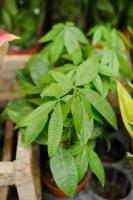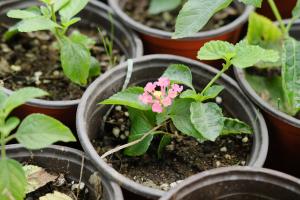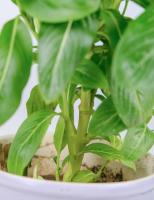How to Plant a Fig Tree in South Africa
South Africa is a perfect place for fig trees. These trees can grow well in the warm and subtropical climates of the country, producing delicious fruit that can be enjoyed fresh or preserved. However, planting a fig tree takes time, effort, and knowledge to ensure a healthy and fruitful tree. Here are some tips on how to plant a fig tree in South Africa.
Choose the Right Variety
The first step in planting a fig tree is choosing the right variety. With over 700 different types of fig trees, it might be overwhelming to decide which one to plant. However, it's important to consider the climate, soil type, and available space you have. For instance, the common fig tree (Ficus carica) can grow well in most parts of South Africa, but it's not tolerant to frost. Black fig trees (Ficus African) tend to be more drought-tolerant and can withstand colder temperatures; however, they require more water to produce fruit. Other popular varieties in South Africa include the White Genoa, Brown Turkey, and Cape White.
Choose the Right Spot
Fig trees should be planted in a sunny and well-ventilated spot. The soil should be well-drained and fertile, with a pH between 6.0 and 6.5. If the soil is too acidic, you can add dolomitic lime to raise the pH. If the soil is too alkaline, add elemental sulfur or organic matter like peat moss to lower the pH. Avoid planting fig trees in areas that are prone to frost or stagnant water, as this can kill the young tree.
Planting the Fig Tree
Before planting, dig a hole that's twice the size of the root ball of the fig tree. Mix some organic matter like compost or manure with the soil and fill the hole halfway. Carefully remove the tree from the container and loosen the roots slightly. Place the tree in the hole and make sure it's straight, with the top of the root ball level with the soil surface. Fill the hole with soil and press the soil around the roots to remove any air pockets. Water the tree thoroughly to settle the soil and add some mulch around the base of the tree to retain moisture and suppress weeds.
Caring for the Fig Tree
Caring for a fig tree in South Africa involves regular watering, fertilizing, pruning, and disease control. Fig trees require about 1 inch of water per week, especially during hot and dry periods. However, overwatering can cause root rot, so make sure the soil is moist but not waterlogged. Fertilize the tree once a month from spring to fall using a balanced fertilizer like a 10-10-10 N-P-K ratio. Prune the tree in late winter or early spring to remove dead, diseased, or crossing branches. This will improve air circulation and make room for new growth. Finally, protect the tree from pests like fig beetles or fruit fly attacks by using insecticides or covering the fruit with netting.
Harvesting the Fruit
Fig trees usually take about 2-3 years to bear fruit, depending on the variety and growing conditions. The fruit should be picked when fully ripe, which is when they start to become soft and droop. To avoid bruising the fruit, pick them by their stem and handle them gently. Dried figs can be stored in a cool, dry place for several months, while fresh figs should be consumed within a few days or preserved by freezing, canning, or making jam.
Planting a fig tree in South Africa is a rewarding experience that can provide you with fresh and delicious fruit for years to come. With the right variety, spot, planting, and care, you can enjoy the sweetness and health benefits of figs in your backyard.

 how many times do yo...
how many times do yo... how many planted tre...
how many planted tre... how many pine trees ...
how many pine trees ... how many pecan trees...
how many pecan trees... how many plants comp...
how many plants comp... how many plants can ...
how many plants can ... how many plants and ...
how many plants and ... how many pepper plan...
how many pepper plan...






























